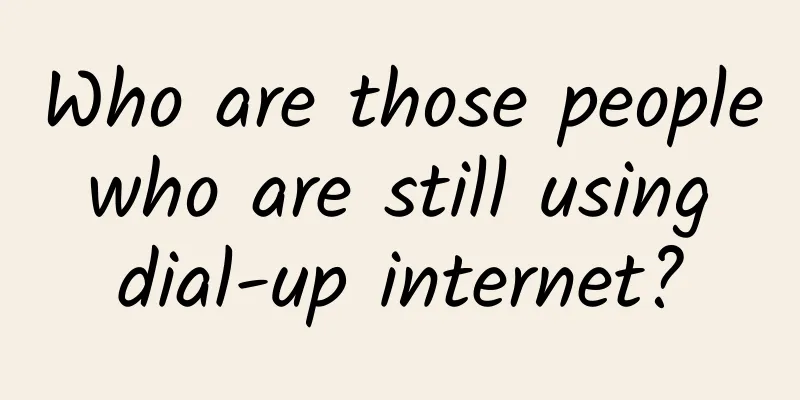6000-word detailed explanation of community operation

|
This article explains the concept of community operation , how to have huge community traffic, the indicators that need to be paid attention to in community operation, and what needs to be paid attention to behind community operation. When we are browsing our space or circle of friends, we often see that a friend has created a group and sent out a group QR code to invite everyone to join in. Soon, a community grows from a few people to dozens of people, and the messages grow from a few to 99+. You also meet many friends and learn a lot of new knowledge. These are some of the benefits a community brings you. Seeing this, you may think that community operation is easy. Isn’t it just creating a group, inviting some people, and posting a group announcement? Admittedly, these are all very important points in community operation, but if you want to do a good job in community operation, you still need to spend a lot of time and effort. So in today’s tweet, let’s talk about community operations. Let me first introduce my basic situation. (In this article, QQ/WeChat groups are uniformly written as "communities")
Now, I have built many groups, some of which are self-operated, and some need to be operated on a daily basis; they will be reorganized after a period of time. As for the number of communities I currently have, I will not mention the specific number, leaving it a suspense. The framework of this article is as follows:
1. What you want to know about the community1. What is a community?Most people are familiar with communities, just as mentioned at the beginning: one day when you were browsing your updates, you happened to see a group chat QR code. The topic of the group chat was quite interesting, and you happened to have a good relationship with the group owner, so you scanned the code to enter the community. A group of people, based on some key interests (group topics, group content, group members...), form a primitive community through some links (QR codes, private invitations...). 2. Why build a community?Due to a series of needs, a small number of people create groups, and most people join groups. Why do those who create groups create groups? Based on discussions between myself and my friends, it can be roughly divided into the following points:
3. What can the community bring us?Different communities bring different benefits to group members. Some people have gained friendships in a community and made many new friends (such as a hobby exchange group); some people have gained knowledge in a community, which has greatly helped them improve their work efficiency (such as an experience sharing group); and some people have monetized their skills in a community and continued to accumulate relevant connections (such as a skill order-taking group). Communities of all kinds are integrated into our lives. A good community can help us effectively reduce the impact of information asymmetry and also provide us with many high-quality resources. 2. How to have huge social trafficThe following is divided into two sections, one from the perspective of the group owner and one from the perspective of the group members. So let’s talk about it based on the above. If you were a group owner, how would you build your own community? In order to demonstrate a complete process, let's go directly to a specific case. Xiao Ming is the community operator of a job search company. On this day, he received a new job assignment: within two weeks, he needs to set up 10 job search-related communities, with an average of more than 200 members in each group, and at least 50% of the people must have spoken, which means covering 2,000 traffic. Xiao Ming began to formulate relevant strategies. The first step was, should the 10 job-seeking related communities be made homogeneous or have different dimensions? Xiao Ming thought about the future development and felt that it would be more convenient to expand based on different dimensions, so he decided to operate in different dimensions. Then the question arises again, based on what dimension (there are many ideas, you can think about it more)? Is it based on different industries, different positions, or different regions? Xiao Ming considered that he was in operations, and the most information in his department was about Internet operations. If resources from other positions/industries are needed, cross-departmental support must be provided, and subsequent stability cannot be guaranteed. So he initially decided to establish operations and job-hunting exchange groups in different cities, taking Beijing, Shanghai, Guangzhou and other cities as examples. So Xiao Ming actively posted group chat-related copy in some job search forums and existing groups. Gradually, there were dozens of people in the ten groups, and the total coverage reached several hundred. At this time, a week has passed. Xiao Ming still has one week left to complete the following two goals: Dozens of people turned into two hundred, and half of these two hundred people made their first speech in the group. As time was running out, Xiao Ming quickly adjusted his strategy and decided to organize a small event. He asked his leader for an operation job application package that had not yet been made public, and sent a group announcement: invite three people to join the group to get the package; invite ten people to join the group to join the core small group; this fan group will have priority to get the project internal testing opportunity in the future, and the small group is limited to 30 people. Seeing this, you may say, I have used this method before, but it didn’t work. Let me add here that whether an activity is successful or not is determined by many factors.
The above does not mean that you have to use the most expensive resources for every event. Small events have their own strategies, and large events have their own evaluations. A Deng just wants to say that community operation seems simple, but after doing it for a long time, you will find that there are many details that can be optimized. To give another example, do you want to make friends with users, or do you want users to make friends with other users; do you want users to make friends with merchants, or do you want users to bring new users to make friends with merchants? It’s a bit confusing, so you can think about it carefully. Returning to Xiao Ming’s case, after sending the above group announcement, he found that the overall effect was quite good, especially in the city of Hangzhou, where the number of people has exceeded 300. Xiao Ming quickly chatted privately with some new friends. By Wednesday afternoon, Xiao Ming finally achieved a coverage of 2,000 friends. Together with that core small group, Xiao Ming is now a big boss with 11 groups. Then there is one last indicator left, the number of active people in the group. Friends who have worked in community operations know that in a community, there are indeed people who have not spoken for a long time, and their number is quite large, so Xiao Ming came up with two more coping strategies. First, group members introduce themselves. He first guided everyone in the core group to send in their own introductions. The core group responded quickly and everyone completed their self-introductions within half an hour. So Xiao Ming transferred this self-introduction chat record to other groups in turn, guiding group members to introduce themselves one by one, and inserting some small benefits when necessary - it turned out that this strategy was good, and Xiao Ming found that the proportion of active users in the group reached 35%. There is only one step left and victory is just around the corner. So Xiao Ming immediately searched online for some operations job questions from previous years and began to guide everyone to solve the questions together. At this time, those friends who are unwilling to disclose their own information but are preparing to apply for a job started to come out, and the atmosphere became very lively. By Thursday night, Xiao Ming found that the group activity had reached 60%. The KPI was successfully achieved and I got the money for the chicken legs. PS: What if Xiao Ming has not achieved the KPI by Friday afternoon? Everyone can use their imagination, for example, give out some more benefits, and deduct 666 from the friends who receive the benefits? The above cases are almost described. Now let’s talk about how to enter a large number of communities in a short period of time from the perspective of group members. Then let’s combine it with Xiao Ming’s case above and compare them one by one, which are the following strategies.
PS: If you feel that the methodology is a bit too much, you can subscribe first, so that you don’t have to worry about not finding relevant information later. 3. Indicators that touch your heartAs mentioned above: If a person wants to create a group, there must be some reasons, and naturally there will be certain expectations. For example, you hope that the community will reach 500 members in a short time, or you hope that the community will receive 99+ messages in a short time. So, what are the metrics you set for your community? What kind of scenario has been achieved? Is the ecology of this community healthy? Next, I would like to briefly share three of my own points. 1. Assume the indicator is group activityIf you create a group in the hope that members in the group will frequently express their own opinions, here are a few ideas. 1) Do a good cold start When users first join a group, they actually pay a certain amount of attention to the group. There are many small details that can be optimized, such as group announcements, group administrators, group note formats, etc. It is best to let users immediately perceive the positioning of this community. If the group owner cannot manage all the new members joining the group at once, he can set it up through the relevant platform to automatically send a welcome message to XX people when they join the group, or find a few friends to run the group together. 2) Discussion on output at fixed time and fixed point For example, you can send a group announcement to inform everyone that everyone will practice a real interview question together at 9 o'clock every night, and the location will be in the group, and then users will gradually develop a habit. If the effect is good, you can also organize all the discussion content into articles and publish them on other platforms to attract more target users. 3) Release some benefits The group can distribute some benefits that group members are interested in. For example, information, referral codes, live lectures, etc.; this will guide users to continue to pay attention to this group chat, and some users may also take the initiative to send relevant information to the group to cultivate a good communication atmosphere. 2. Assume that the indicator is related data from other platformsMany times, when companies establish communities, they view them as a channel with certain strategic goals behind them. Taking APP download volume as an example, Company A has created 20 communities, covering 4,000 users, and ultimately hopes that these 4,000 users can download and register their APP. At this time, community operation is to improve the conversion rate from "group members" to "APP downloads", so what points can be optimized? 1) Do relevant tutorials Users may already be familiar with community-related content, but they don’t know much about the content on the APP. Many people don’t know what to do after downloading the APP. At this time, a illustrated tutorial on how to jump from the social network to the APP can effectively enhance users’ relevant perception. 2) Inform relevant benefits So many people would think that it is troublesome to download an APP after they have already joined the community. At this time, you can tell users that they can get some benefits after downloading the APP and completing specified operations, such as free coupons or some exclusive badges, depending on the characteristics of the APP. 3) Share some successful cases Most of the group members who are in the community but have not downloaded the APP are in a wait-and-see state. At this time, you can find some loyal users who have successfully downloaded the APP and have a good experience using it to participate in relevant activities in the group and share some of their usage experiences; and provide welfare incentives many times to improve the overall conversion rate. 3. Assume the indicator is the number of group paying usersThose who love to take online courses may know that many companies that build educational communities will first open classes with some relatively low-priced or free courses, and then provide some introductions to other related high-priced products during the period. I also bought related products some time ago, and the overall feeling is pretty good. Here are a few points to note. 1) The process should be smooth and clear Different from the conversion of community users into APP users mentioned above, the process here is more about APP/other platforms jumping to the community and then converting them into paying users of high-priced products. The process of jumping to the community from the APP is actually very important. In addition to informing the class teacher's WeChat, class start time, etc., it is best to also leave relevant manual customer service entrances and QA answers. 2) Supervise relevant learning progress The difference between this type of course and many online courses on some platforms is that this type of course has class groups. People in a group study with you, so they will have a certain degree of self-consciousness and their completion rate will also be improved. Therefore, if you are a class teacher at this time, you need to check the students' course progress from the background in a timely manner, conduct more one-on-one communication, and consider some issues from the students' perspective. Only when students have truly completed the course and found it useful will they consider purchasing other products. This is a win-win for both parties. 3) Effectively control the content output of the community Many students join the community with the mindset of learning. If they find that the community often discusses news that is not related to learning, their favorability towards the community will subconsciously decrease. As a class teacher, you can consider setting up two groups, one for notifying important course information and one for students to communicate and chat with each other, depending on the specific situation. At the same time, we should actively encourage everyone to check in in the group, raise some questions that they don’t understand and help each other, and then regularly sort out some difficult points and distribute them to the group in the form of benefits to help students learn better. 4. Behind the Community OperationI believe that many group owners have experienced such moments: the group chat discussion is lively, but when you look at the number of group members, you find that two people have left, or you post some content but only a few people read it. At this time, you need to think about: for the self-built group chat, do you want everyone to chat in the group whenever they want, or do you want everyone to find relevant information in the group when they need it? Do you want others to open the group message without being reminded, or not to open it, or not to open it but pin it to the top. The above all need to be pondered, and I would like to talk to you about some of the things behind it. 1. Some positioning and thinkingMany people will find when operating communication communities that there are always some people in the group who send messages like support and voting. Although there is a certain demand, it is a disturbance to most people. As a group owner, you may condone this kind of phenomenon, you may prohibit it, you may ask group members to send some benefits to other group members as a token of their appreciation, or you may set up a special group for sending such messages. The above are all normal operations. The essence is to think clearly about the positioning of the group, whether such phenomena are allowed to occur, and whether there are corresponding decisions. When I was interviewing for an operations position at an education company, I was asked how to deal with the situation where problems arise in user communication within the group, resulting in a large number of people leaving the group. Although there is a framework to follow, this situation can be effectively avoided. But many times the facts cannot be described by theory. How to resolve conflicts? After many attempts, I still think that one-on-one private chat is the most effective. It is recommended not to chat openly in the group, as that will put the overall situation in an unstable state. Once the problem is solved and everyone returns to the community for friendly exchanges, it can be considered a crisis resolved. There are many types of communities. Some rely on strong relationship chains, some rely on strong interest chains, and some rely on various coincidences. When users enter your group chat, they are more or less interested in group positioning. Different communities attract different users. We can also try to improve some small details without changing the group’s positioning. For example, on the basis of community operation, some sense of ritual can be appropriately added. For example, write a group announcement carefully, because group announcements are also a channel for users to obtain information. If it is written clearly and beautifully, users can obtain useful information and it can also effectively improve user favorability. In summary, the group owner needs to think clearly about the community you have built and how you want to operate it. 2. Community activity cycleAny community has an active cycle. Some active cycles are long, while others are short. It is necessary to control the active cycle of the community reasonably. Later on, you can try disbanding the old group and creating a new one, transferring it to others, stopping operations, and restarting it. 3. Personal characteristics of the group leaderI have heard a saying before, which roughly means: A company's corporate culture is inseparable from the values of its founder. Similarly, the atmosphere of a community is closely related to the personal characteristics of the group owner. After all, when many communities are cold-started at the beginning, many people join the group directly because the group owner is someone they are familiar with. In addition, the group positioning, group content, group announcements, etc. are closely related to the group owner, and are also closely related to users' joining and leaving the group. For example:
Therefore, whatever the leader of a community thinks in his heart, the community will gradually transform in that direction. The personal characteristics of the group leader, like the significance of the founder to the company, have a profound impact on the operation of the community. In summary, community operations can connect to more people, and with refined operations, they can sometimes achieve better user reach than official blogs and WeChat accounts. The above is A Deng’s summary of the methodology of community operation. I hope it will be helpful to everyone. Author: Deng Yan Source public account: A Deng Notes |
>>: Analysis of creative ideas for beauty business promotion!
Recommend
Exploration | The speed limit of the universe: Why can't we surpass that shining photon?
On the vast stage of the universe, particles shut...
2015: Will smartphones enter the borderless era?
CES2015 (International Consumer Electronics Show)...
Can an “anti-inflammatory diet” really improve immunity?
This is the 4274th article of Da Yi Xiao Hu Recen...
Multiple cases of hemorrhagic fever have occurred in Xi'an, reminding you: Be vigilant if you have fever and headache!
Since the beginning of winter this year, major ho...
Segment "user activity status" to help you achieve KPI indicators
“Why has the conversion rate decreased? I can’t f...
Apple releases new patent? Can it solve the crease problem of foldable devices?
According to foreign media reports, the U.S. Pate...
The business model of giants intervening in game live broadcasting remains to be tested
On August 27, YouTube officially launched the gam...
Video websites have entered the era of competition among fathers, but profitability is still the top problem
With Xiaomi's entry into iQiyi and Youku Tudo...
Chewy Nougat: Full hands-on experience with Android 7.0!
Google started rolling out Android 7.0 Nougat yest...
"Left eye twitching means good fortune, right eye twitching means disaster"? What does eyelid twitching mean?
"When the left eye twitches, good things are...
How to use the media to create internet celebrity products?
Every company wants to build its own internet cel...
Zhang Chaoyang: TV series are still the "staple food" of Sohu Video
January 30 (Reporter Zhang Zhichang) After the fu...
“WeChat ban” is an obstacle that Chinese Internet companies cannot avoid
In the past two days, Wang Xin, Luo Yonghao and T...
How big is the risk of COVID-19 spreading from animals to humans? How to prevent it? Experts explain →
From January 9, when Tianjin announced the first ...
As giants collectively enter the content e-commerce market, are companies like "Little Red Book" having an easy time?
Compared with new models such as live streaming e...









